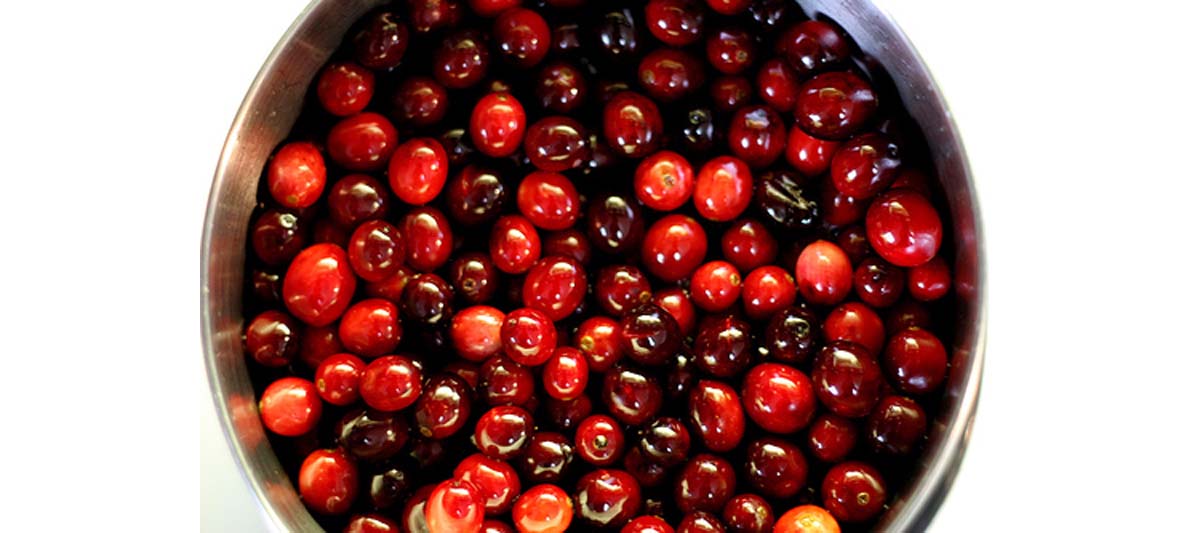Cranberries are a rich source of polyphenol antioxidants and phytochemicals, which are actively being researched for the possibility that they may strengthen the immune system, cardiovascular system and for their anti-cancer properties. They are also tasty, of course!

Where are Cranberries Grown and How Can You Grow Them?
Cranberries can be found growing in the wild in North America, England, and Canada, in the Nordic countries, in Russia, in Southern Chile, in the Baltic States, Eastern Europe and Scotland. The berries were originally harvested in the wild but the loss of their natuve growing habitat has all but completely wiped out the wild population.Cranberries can be grown in a bog or as vine plants, depending upon what the surrounding climate is like. The berries are harvested in the fall when the fruit reaches a deep red color, usually in September or early October.
Nutrients Found In Cranberries
Cranberries are a rich source of polyphenol antioxidants and phytochemicals which are actively being researched for the possibility of benefits to the immune system, cardiovascular system and for anti-cancer properties. The berries are an excellent source of vitamin A, which plays an important part in the vision cycle related to retinal form. Vitamin A also plays an integral role in gene transcription in retinoic acid formation and is necessary for maintaining healthy skin.Cranberries are also high in potassium which is important for neuron function, maintaining the osmotic balance between cells and interstitial fluid and for muscle contraction. Potassium is also an essential nutrient in human nutrition and is important for maintaining the proper fluid and electrolyte balance in the human body.
Healthy Ways to Prepare Cranberries
There are many healthy ways of preparing cranberries which will help maintain the vital nutrient and vitamin content of the fruit. Cranberries are best served fresh and raw; however, fresh canberries are rather hard to come by and you will mostly be able to source dried cranberries in grocery stores and health food shops. Other healthy preparations that are more suited to this dried form include in breads, desserts, dried or added to a smoothie or breakfast cereal. Cranberry tea is, of course, another classic option.
Health Benefits of Cranberries
Cranberries are a powerful source of vitamins, minerals, nutrients, polyphenol antioxidants and phytochemicals. There is currently ongoing research being conducted to highlight the possible benefits cranberries can have on the cardiovascular and immune system, and for anti-cancer properties.
The berries have the ability to inhibit and possibly reduce the formation of dental plaque and have shown to be effective against the formation of kidney stones. The anthocyanidin flavonoids, cyaniding, and quercetin found in cranberries produce unknown effects in human health, but are a powerful compound against cancer cells.
Because cranberries contain flavonoids, research studies suggest the fruit could be a veritable weapon in the prevention of atherosclerosis, or hardening of the arteries. Flavonoids help reduce the amount of LDL cholesterol in the blood, which in turn increases the flow of good cholesterol in the body and prevents clogging of the arterial walls, which in turn lowers the risk of cardiovascular disease, heart attack and stroke.
One of the primary causes of gastric ulcers is a bacterium called Helicobacter pylori, or H. pylori. In a double-blind random research study, subjects were asked to consume two cups of cranberry juice per day. Results of the study indicated that regular consumption of cranberries could destroy H. pylori bacteria and thus be used as a preventative measure against the second most common type of cancer in the world. Cranberries were proven to be effective at eliminating antibiotic-resistant strains of H. pylori without producing any adverse side effects. The bacteria-blocking abilities of cranberries are a subject of ongoing research by many major universities worldwide.
Since 2002, there have been increasing medical studies done to show the potential of cranberry polyphenolic compounds in cancer prevention. The tannins found in cranberries have also been proven to reduce the incidence of urinary tract infection, as well as possess anti-clotting properties. Cranberries contain many compounds which are important to human health and science has only just begun to understand all the many benefits of the berry. Since cranberries are also uniquely flavorful, adding them to your diet is a win-win!
- en.wikipedia.org/wiki/Cranberry
- www.library.wisc.edu/guides/agnic/cranberry/faq.htm
- www.nal.usda.gov/fnic/foodcomp/cgi-bin/list_nut_edit.pl
- www.msnbc.msn.com/id/15814415/
- www.cranberryinstitute.org/emerging.htm
- www.cranberryinstitute.org/health/urinarytract.htm
- www.cranberryinstitute.org/news/PR/PR080205.htm
- www.mayoclinic.com/health/cranberry/NS_patient-cranberry
- Photo courtesy of Half Chinese on Flickr: www.flickr.com/photos/halfchinese/305095614


Your thoughts on this